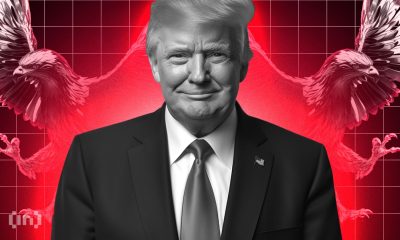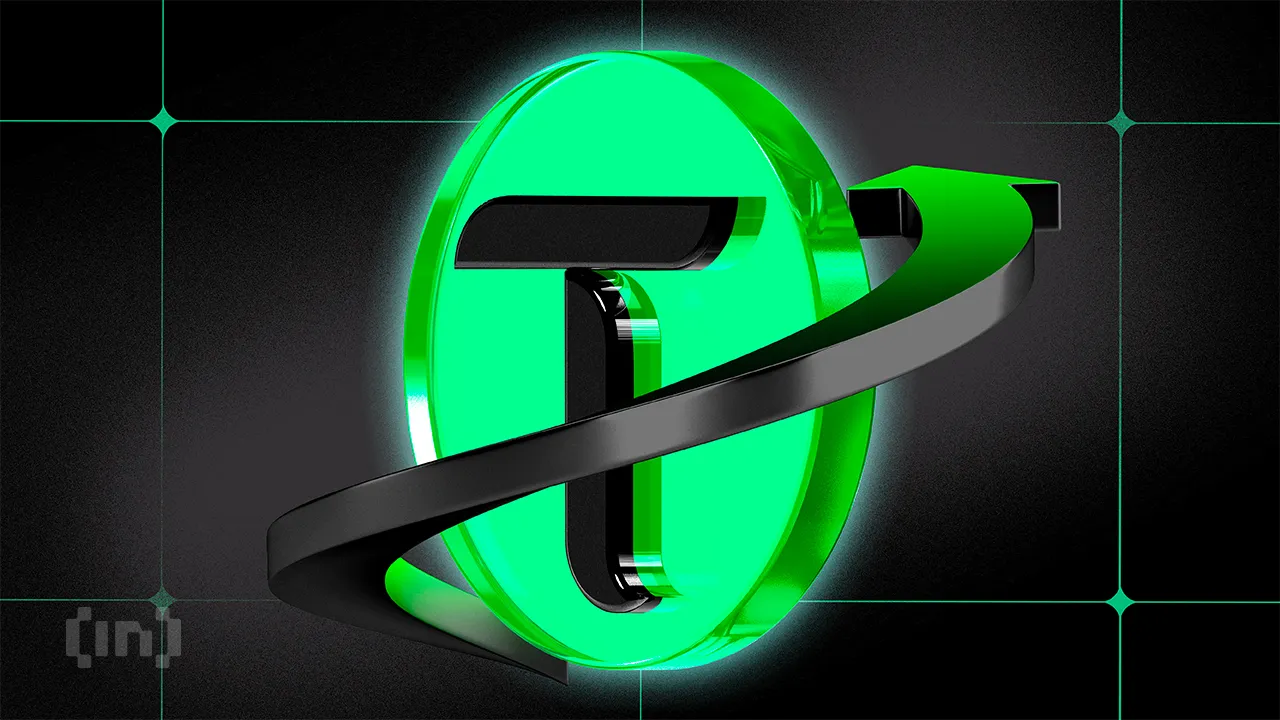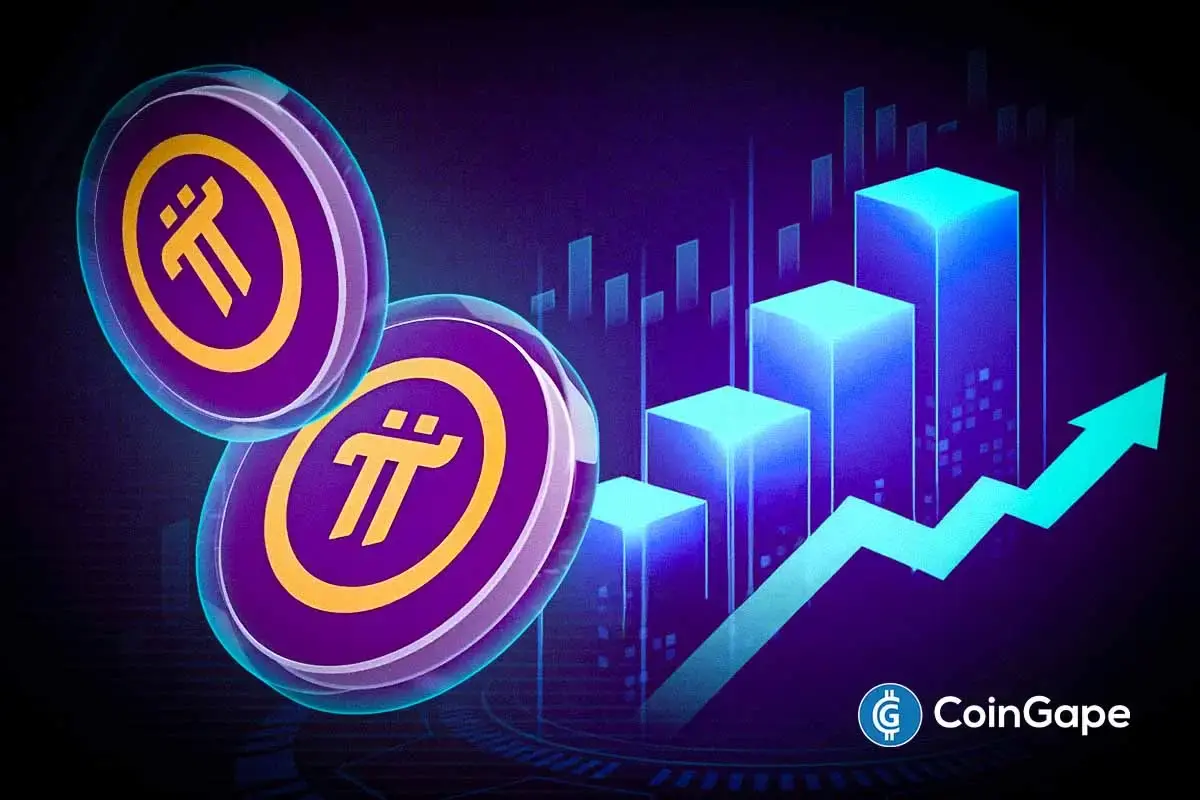Market
Trust Wallet CEO Predicts ‘Amazon Web3’ Future for Crypto Wallets

Eowyn Chen, CEO of Trust Wallet, who first encountered blockchain concepts in 2014 while working in fintech, has risen to prominence in the crypto industry, joining Binance in 2018 before taking the helm at Trust Wallet in 2022.
In a recent exclusive interview with BeInCryto, Chen shared insights into the challenges facing the crypto wallet industry, noting that most wallets struggle to be profitable. She also revealed her vision for the future of wallets, describing a concept akin to “Amazon Web3,” and predicting that web extension wallets may disappear in favor of dApp-embedded functionality.
For the first time, Chen explained the meaning behind her chosen name, Eowyn, inspired by J.R.R. Tolkien’s “Lord of the Rings.” She shared that this name serves as a personal reminder to avoid industry temptations and to prioritize the project’s success over personal gain, principles that guide both her leadership and Trust Wallet’s culture.
Q: Why did you choose the name “Eowyn”?
It’s from the Lord of the Rings written by J.R.R. Tolkien. He made up this name which sounds very Irish.
With this name, I remind myself two things. The first is the theme of Lord of the Rings, to carry the most powerful ring to the mission, which is to destroy the ring so that no one has a single point of tyranny. Sometimes crypto industry has lots of temptations, no matter if that’s the fame, the money, or the power. I have seen leaders that got into pride and then just fall. I want to remind myself not to get tempted by the ring. The second is this character in the Lord of the Rings dies. Anyone who wants to do long-lasting things needs to forget about herself or himself in the project. The key goal is not to create for staying in the position forever but to create something that stays beyond you.
Q. How does this philosophy apply to the company?
I’m building my company to survive beyond the founders like me. I tell my team, too, that I don’t expect Truss Walet to be the last employer you’re having. They will go into the industry to do other interesting, cool stuff, but I want you to have integrity and a mission focus, and to learn from the cultural value and bring to the industry. That’s how we can grow more mature and trustworthy because there are enough scams out there.

Q: Where are you based, and how is the regulatory environment treating you?
Right now in Dubai, but previously in the U.S. There was a concern. Coinbase Wallet got the SEC case, and so far, luckily, we haven’t got any cases. We tend to be way more conservative than all our peers because we learned the lessons from Binance. I was Binance and saw how things go down. There are certain boundary lines such as how to make money or where to have the business model.
Q: How do you see the future landscape of the crypto wallet industry?
Most of the wallets don’t make money. The potentially profitable ones are Metamask and maybe Coinbase Wallet. All the other wallets are not making money or losing money, because wallet as a business model is not easy to survive. So either they have a sugar daddy that they have to make sure that you give them the money and support them.
Read more: 16 Best Web3 Wallets In 2024
Q: But chains and cryptos increase continuously, doesn’t it help the wallet business?
Initially, we were an Ethereum-only wallet, but now we support 105 chains and 65 are non-EVMs. But it was the early days when the multi-chain journey happened. But the chains don’t bring us new users anymore. There haven’t been any new chains that we integrated that were such a great attraction to users and made them start to use our product.
Nowadays, we tend to capture the users already existing in the industry, since the new chains no longer drive anything. So, it’s more of a retention play for us. The users don’t have to have 50 wallets for 50 chains but they can have a one-stop shop with us.

Q: Are there any upcoming changes or new features you are planning?
One thing that we have been testing and are trying to make more moves on is the smart contract integration in EIP-7702, which upgrades the EOA(Externally Owned Wallet) with some smart contract features. The fundamental role for a wallet to play is simple, easy-to-use, UX, and we believe that smart contracts can allow a better, smarter user experience and also, that user experiences can retain users better.
Q: What challenges does your business face as a whole?
Scalability is a major challenge, especially being a multi-chain wallet supporting both EVM and non-EVM chains. When you have to provide users with gasless experiences or chain abstractions experiences, you cannot just depend on EVM’s standards. It’s very difficult to design both from the product layer and from the technical layer to give users that simple, consistent experience.
Q: What’s your vision for the future of wallets?
One is to build a B2B service like Wallet-as-a-service. Another is like “Amazon Web3,” offering various utilities with better user experiences. Web extension wallets may disappear in a few years, with wallet functionality becoming embedded in dApps for a seamless experience.
Disclaimer
In compliance with the Trust Project guidelines, this opinion article presents the author’s perspective and may not necessarily reflect the views of BeInCrypto. BeInCrypto remains committed to transparent reporting and upholding the highest standards of journalism. Readers are advised to verify information independently and consult with a professional before making decisions based on this content. Please note that our Terms and Conditions, Privacy Policy, and Disclaimers have been updated.
Market
Report Alleges Massive Meme Coin Sniping on Pump.fun

According to a new report from Pine Analytics, token deployers on Pump.fun systematically funded sniper wallets to buy their own meme coins. This impacted over 15,000 token launches on the platform.
These sniper wallets operated primarily during US trading hours, executing standardized, profitable strategies. Unrelated bot activity obscures their behavior, making it extremely difficult to isolate these wallets—and they can readily adapt to new countermeasures.
Snipers Roam Free on Pump.fun Meme Coins
Pump.fun has remained one of the most popular meme coin launchpads on Solana despite persistent controversies and other criticism.
However, Pine Analytics’ new report has uncovered a new controversy, discovering systematic market manipulation on the platform. These snipes include as much as 1.75% of all launch activity on Pump.fun.
“Our analysis reveals that this tactic is not rare or fringe — over the past month alone, more than 15,000 SOL in realized profit was extracted through this method, across 15,000+ launches involving 4,600+ sniper wallets and 10,400+ deployers. These wallets demonstrate unusually high success rates (87% of snipes were profitable), clean exits, and structured operational patterns,” it claimed.
Solana meme coin deployers on Pump.fun follow a consistent pattern. They fund one or more sniper wallets and grant them advance notice of upcoming token launches.
Those wallets purchase tokens in the very first block and then liquidate almost immediately—85% within five minutes and 90% in just one or two swap events.

Pump.fun meme coin developers exploit this tactic to create the appearance of immediate demand for their tokens. Retail investors, unaware of the prior sell‑off, often purchase these tokens after the snipe, giving developers an unfair advantage. This constitutes market manipulation and erodes trust in the platform.
Pine Analytics had to carefully calibrate its methods to identify genuine snipers. Apparently, 50% of meme coin launches on Pump.fun involve sniping, but most of this is probably bots using the “spray and pray” method.
However, by filtering out snipers with no direct links to developer wallets, the firm missed projects that covered their tracks through proxies and burners.
In other words, the meme coin community does not have adequate defenses against systematic abuse on Pump.fun. There are a few possible ways that the platform could flag repeat offenders and sketchy projects, but adaptive countermeasures could defeat them. This problem demands persistent and proactive action.
Unfortunately, it may be difficult to enact such policies. Meme coin sniping is so systematic that Pump.fun could only fight it with real commitment.
Analysts think that building an on-chain culture that rewards transparency over extraction is the best long-term solution. A shift like that would be truly seismic, and the meme coin sector might not survive it.
Disclaimer
In adherence to the Trust Project guidelines, BeInCrypto is committed to unbiased, transparent reporting. This news article aims to provide accurate, timely information. However, readers are advised to verify facts independently and consult with a professional before making any decisions based on this content. Please note that our Terms and Conditions, Privacy Policy, and Disclaimers have been updated.
Market
Solana Leads Blockchain Metrics as SOL Momentum Builds

Solana (SOL) continues to show strength across multiple fronts, maintaining a bullish structure on its Ichimoku Cloud chart while gaining momentum in key market metrics. The BBTrend indicator has turned higher again, signaling renewed buying pressure after a brief cooldown.
On-chain activity remains strong, with Solana leading all blockchains in DEX volume and dominating fee generation thanks to the explosive growth of meme coins and launchpad activity. With SOL now trading above a key resistance level, the path is open for further upside—though a loss of momentum could still trigger a retest of lower supports.
Solana Maintains Bullish Structure, but Momentum Faces Key Test
On Solana’s Ichimoku Cloud chart, the price is currently above the Kijun-sen (red base line) but has dipped below the Tenkan-sen (blue conversion line), signaling weakening short-term momentum.
The flattening Tenkan-sen and price behavior suggest possible consolidation or the early stages of a pullback. Still, with the price holding above the Kijun-sen, medium-term support remains intact.
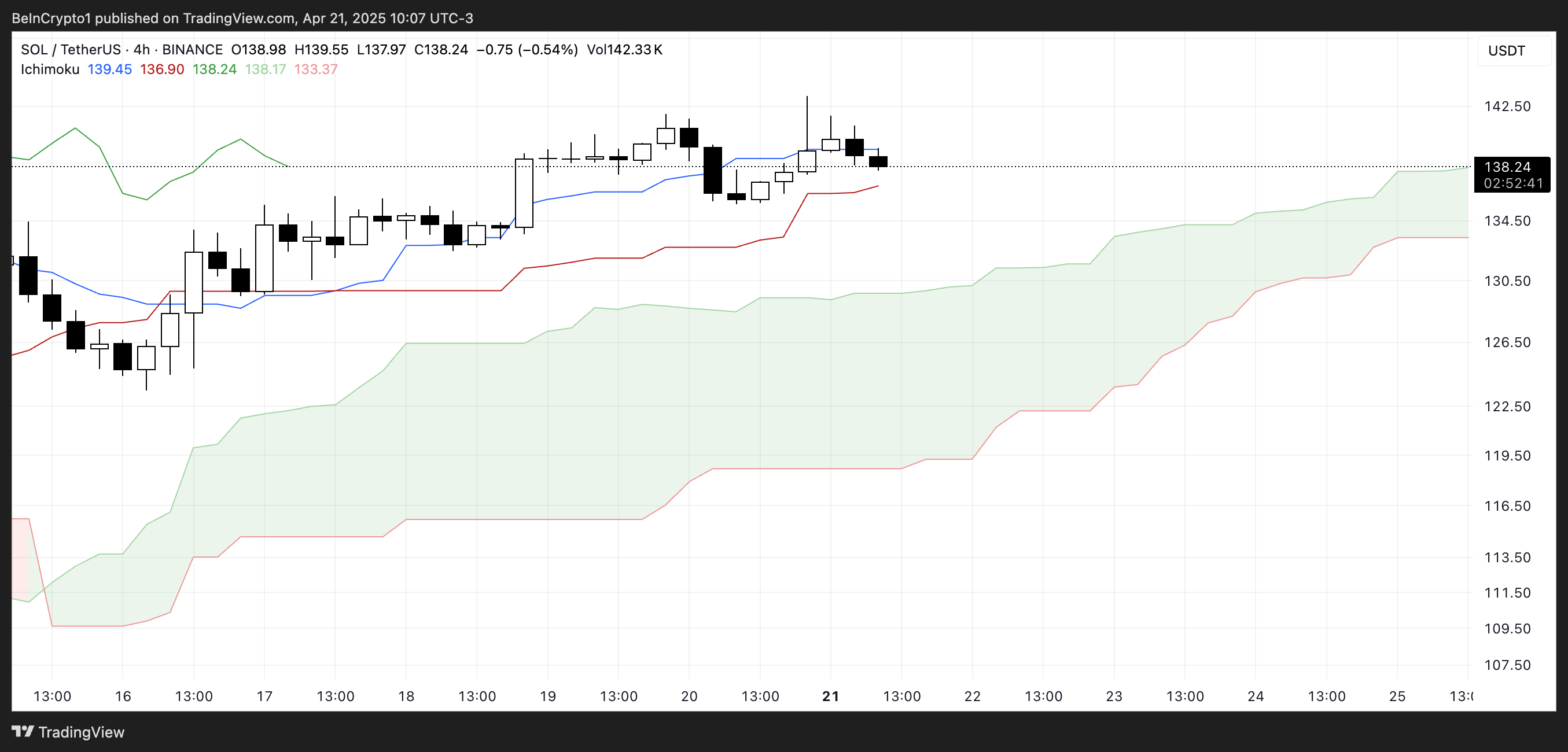
The overall Ichimoku structure remains bullish, with a thick, rising cloud and leading span A well above span B—indicating strong underlying support.
If Solana finds support at the Kijun-sen and climbs back above the Tenkan-sen, the uptrend could regain strength; otherwise, a test of the cloud’s upper boundary may follow.

Meanwhile, Solana’s BBTrend is currently at 6, extending nearly ten days in positive territory after peaking at 17.5 on April 14. The recent increase from 4.26 to 6 suggests renewed bullish momentum following a brief cooldown.
BBTrend, or Bollinger Band Trend, tracks the strength of price movement based on Bollinger Band expansion.
Positive values like the current one point to an active uptrend, and if the BBTrend continues to rise, it could signal stronger momentum and potential for another upward move.
Solana Dominates DEX Volume and Fee Generation as Meme Coins Drive Ecosystem Growth
Solana has once again claimed the top spot among all chains in DEX volume, recording $15.15 billion over the past seven days. The combined total of Ethereum, BNB, Base, and Arbitrum reached $22.7 billion.

In the last 24 hours alone, Solana saw $1.67 billion in volume, largely fueled by its booming meme coin ecosystem and the ongoing launchpad battle between PumpFun and Raydium. Adding to this good momentum, Solana recently surpassed Ethereum in Staking Market Cap.

When it comes to application fees, Solana’s momentum is just as clear. Four of the top ten fee-generating apps over the past week—PumpFun, Jupiter, Jito, and Meteora—are Solana-focused.
Pump leads the pack with nearly $18 million in fees alone.
Solana Breaks Key Resistance as Uptrend Targets Higher Levels, but Risks Remain
Solana has finally broken above its key resistance at $136, flipping it into a new support level that was successfully tested just yesterday.
Its EMA lines remain aligned in a bullish setup, suggesting the uptrend is still intact.
If this momentum continues, SOL price could aim for the next resistance zones at $147 and $152—levels that, if breached, open the door to a potential move toward $179.
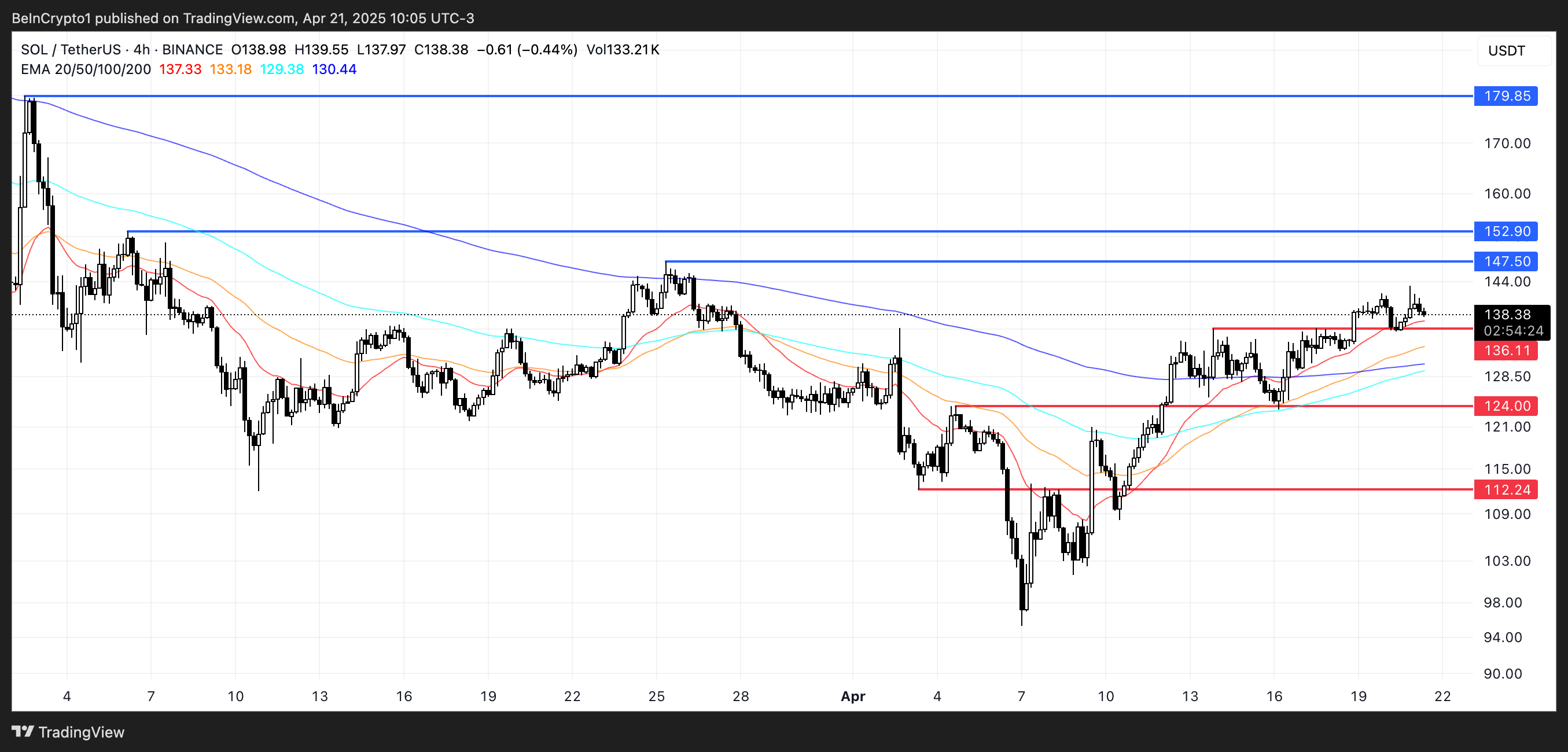
The current structure favors buyers, with higher lows and strong support reinforcing the trend.
However, if momentum fades, a retest of the $136 support is likely.
A breakdown below that level could shift sentiment, exposing Solana to deeper pullbacks toward $124 and even $112.
Disclaimer
In line with the Trust Project guidelines, this price analysis article is for informational purposes only and should not be considered financial or investment advice. BeInCrypto is committed to accurate, unbiased reporting, but market conditions are subject to change without notice. Always conduct your own research and consult with a professional before making any financial decisions. Please note that our Terms and Conditions, Privacy Policy, and Disclaimers have been updated.
Market
Crypto Firms Donated $85 million in Trump’s Inauguration
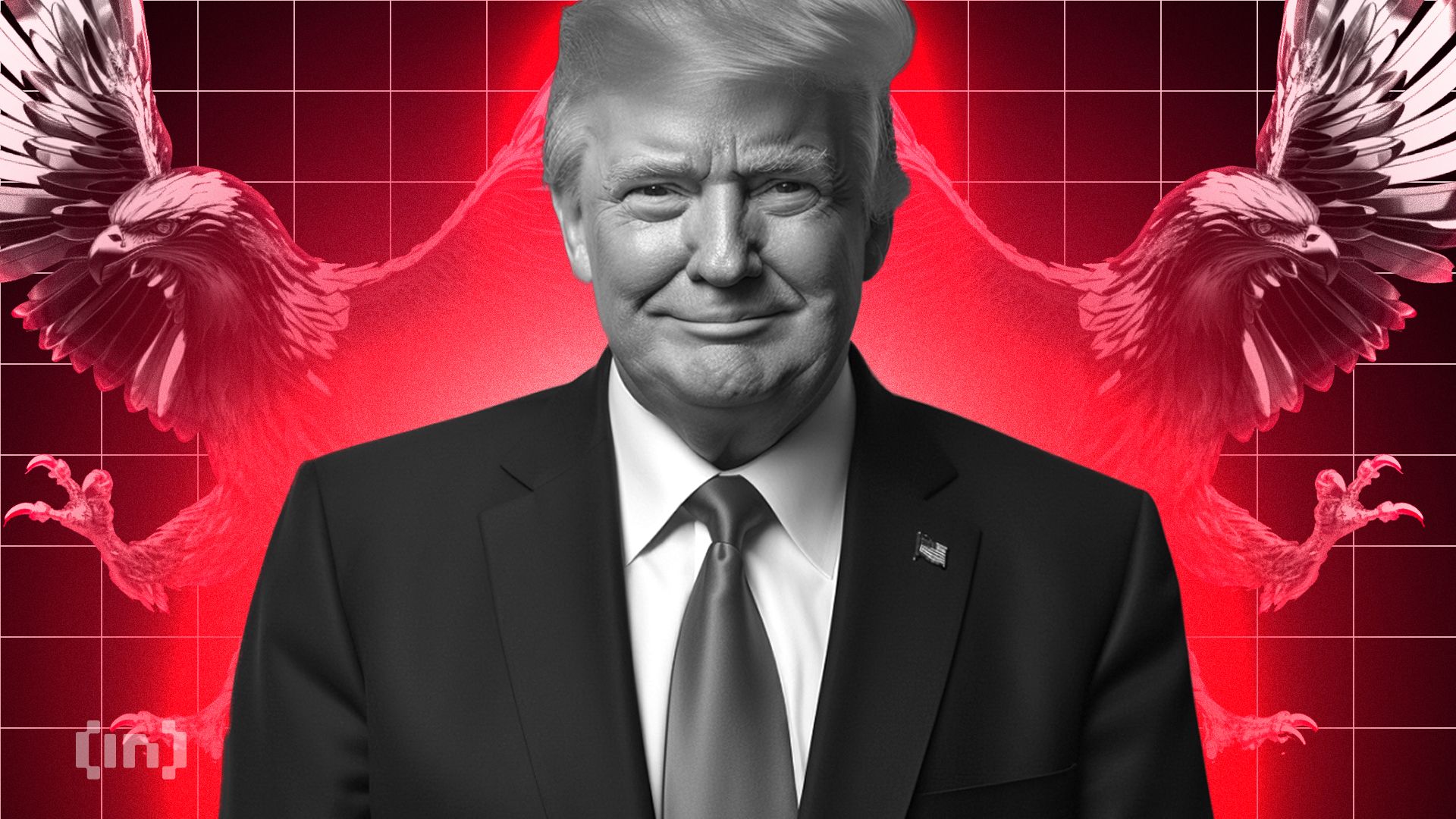
According to a new report, 15 firms and individuals from the crypto industry donated more than $100,000 to President Trump’s Inauguration, totaling over $85 million.
Almost all of these companies apparently received direct or indirect benefits from Trump’s administration. This includes dropped legal proceedings, lucrative business partnerships, participation in Trump’s Crypto Summit, and more.
Crypto Industry Went All-In on Trump’s Inauguration
Since promising to bring friendlier regulations on the campaign trail, Donald Trump attracted a reputation as the Crypto President.
Trump’s Inauguration festivities included a “Crypto Ball,” and several prominent firms made donations for these events. Today, a report has compiled all crypto-related contributions of over $100,000, revealing some interesting facts.

Since taking office, President Trump and his family have been allegedly involved in prominent crypto controversies, and these donations may be linked to several of them.
For example, eight of the donors, Coinbase, Crypto.com, Uniswap, Yuga Labs, Kraken, Ripple, Robinhood, and Consensys, had SEC investigations or lawsuits against them closed since Trump’s term began.
The commission might have dropped its probe against these companies anyway due to its changing stance on crypto enforcement. However, being in the President’s good books likely helped the process.
Further Alleged Benefits for Donors
In other words, nearly half the firms that made donations to Trump’s Inauguration have seen their legal problems cleared up quickly. This isn’t the only regulation-related benefit they allegedly received.
Circle, for example, recently made an IPO after openly stating that Trump’s Presidency made it possible. Galaxy Digital received SEC approval for a major reorganization, a key step for a NASDAQ listing.
Other donors, such as Crypto.com and ONDO, got more direct financial partnerships with businesses associated with the Trump family.
Previously, Ripple’s CEO, Brad Garlinghouse, anticipated a crypto bull market under Trump. Also, XRP, Solana, and Cardano were all unexpectedly included in the US Crypto Reserve announcement.
All three of these companies made major donations to Trump’s Inauguration.
It seems that most of the firms involved got at least some sort of noticeable benefit from these donations. Donors like Multicoin and Paradigm received invitations to Trump’s Crypto Summit, while much more prominent groups like the Ethereum Foundation got snubbed.
Meanwhile, various industry KOLs and community members have already alleged major corruption in Trump’s crypto connections.
While some allegations might lack substantial proof, the crypto space has changed dramatically under the new administration, for both good and bad.
Disclaimer
In adherence to the Trust Project guidelines, BeInCrypto is committed to unbiased, transparent reporting. This news article aims to provide accurate, timely information. However, readers are advised to verify facts independently and consult with a professional before making any decisions based on this content. Please note that our Terms and Conditions, Privacy Policy, and Disclaimers have been updated.


